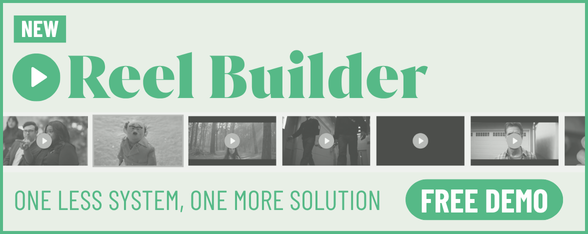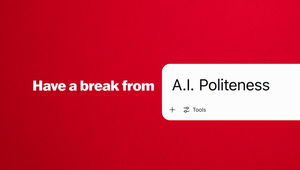
CMO Urges Fellow Marketers to “Be Brave and Buy Some Work”

Goodman Fielder New Zealand's chief marketing officer has encouraged fellow marketers to make the most of the “massive retainers” they pay creative agencies by trusting them.
“You've really got to trust your creative partners. If we pay these guys massive retainers, which some of you may be doing, you've really got to trust them, right,” Frankie Coulter said.
“You have an agency for a reason. If you've got an agency, trust them ... and let them go. So I have been buying work in New Zealand. You guys should buy some work. You've gotta buy some work. If you're an agency, it's a real pain in the arse if you're constantly putting ideas in front of your client and they don't buy it. So be brave and buy some work.”
The work he has bought includes a ‘BreadyWear’ collection for bread brand Vogel’s, featuring bread-stuffed jackets and neck pillows, and ‘Certified Toasters’, which involved calculating the perfect toasting time for a Vogel’s piece of bread for every kind of toaster, resulting in a recent Spikes Grand Prix for Creative Commerce.
At last week’s Marketing Association ‘Brainy Breakfast’ in Auckland, Frankie and head of marketing Jennifer Jones discussed how Goodman Fielder took a big risk when they decided to combat a declining milk market and attempt what competitors had tried and failed to do: create a commercially successful alternative to Up & Go.
“If I roll back a couple of a couple of years, our business, the Meadow Fresh brand, was broken,” Frankie admitted. “I had a milk category that was massively in decline. We had customers that were constantly complaining at us. We had a really tough time.”
Meadow Fresh and category leader Anchor had spent 20-30 years brand-building for the category, using distinctive brand assets like the colour blue and the word ‘goodness’ to promote milk. While that worked for Anchor, as the dominant milk brand, it meant Meadow Fresh “needed help.”
The Goodman Fielder marketing team invested in capabilities (each undertaking Mark Ritson’s Mini MBA to learn the language of business and better communicate with stakeholders like the CEO and CFO), courage (both internally and with agency partners DDB and MBM), and creativity.

The latter led to pivoting away from the fresh white milk category, which was in long term decline because “Kiwis just aren't sitting down to cereal for breakfast,” Jennifer explained, and turning towards the liquid breakfast category.
Up & Go, an Australian product created in the 1990s to respond to a trend of busy people skipping breakfast, is the biggest brand in the cereal aisle. Other brands like Nutri-Grain and Anchor have tried and failed to launch a competitor product, but Meadow Fresh wasn’t intimidated by its competitors' unsuccessful attempts; Frankie wanted to “have a crack” at the profitable category.
“You always test yourself more as a person and as a marketer if you go after something really hard. And nobody had cracked it,” he said. “I was really, really hungry to have a go at these guys.
“We spent just as much time intellectually thinking about, ‘how are we going to creatively compete in this space against that awesome brand that we should all celebrate?’” as they did thinking about the creative execution, he added.
The resulting product was ‘Quick Brekkie’, named by ambassador, Kiwi NBA star Steven Adams, who hated the original name of ‘Liquid Brekkie’. The brand had an existing relationship with the basketballer, sponsoring his basketball camps for New Zealand kids.
The NBA player helped develop the product, is featured on the packaging, and starred as an anime version of himself in the launch campaign, which rolled out last October. But given the size of the New Zealand market, Frankie knew Meadow Fresh couldn’t sneak the product onto shelves without Up & Go parent brand Sanitarium noticing. In fact, he wanted Sanitarium to know a threat was entering the market, and respond.
“We were going to go head to head with Sanitarium. From day one, we thought, [it’s] a massive category here, let's try and take a creative approach to how we're going to be successful in this category.
“We encouraged our competitor to respond. This is a small place. Everybody knows each other. It was very well known, and we let it be known that we were coming into this category through our customers.
“I was wanting a response, and we got it. Before we launched, they knew the day we were launching in stores, and their media went live, probably a week or two before. ... They spent like 10s of millions of dollars on this. And we did not flinch. We did not advertise. We decided not to go head to head with them. And we let them absolutely spend all the money. We only need 11 weeks to 13 weeks to be in the trade, to hang on ... to hold the line.
“We didn't spend the money, and once they'd blown all their budget, we then went live. And I loved that. That was an example of how you can look at tactical play, and you can be creative with what you do.”

The brand set a target of 5% category share -- Up & Go owns over 90% of the liquid breakfast market. Key retailers have already exceeded that KPI, resulting in Meadow Fresh upping its goal to 7%. The market share gain has also led to growth in the category, with Kiwis going from drinking an average of seven cartons of liquid breakfast product a year to drinking nine.
While the risk paid off, Frankie said he was willing to back the decision knowing it could fail. He asked the room, “Are you willing to be humble enough to lose and learn? We're up against Sanitarium ... We might still lose, but it's better to have had a goal and lose than not have a goal at all, right?
“This is something I am personally passionate about at Goodman Fielder. Even when we lose, we celebrate it. Even when we lose, we tell the CEO. Why? So you [don't] just celebrate successful stuff, you've actually got to own the stuff that you don't win as well. That is what makes an awesome partner.”
The breakfast event also included sessions featuring Spark Game Arena Lead Ally Young, and One New Zealand (formerly known as Vodafone) head of brand and loyalty Susannah Winger. Each spoke about how brands can engage sports fans beyond the game, to convert them into brand fans.

Under Ally’s leadership, Spark and agency partner Colenso BBDO created a gaming festival which targeted the 79% of New Zealanders who game. Susannah, meanwhile, stepped through One New Zealand’s 25-year partnership with the Warriors rugby league team, noting the long-term sponsorship deal was a key reason why the telco “smashed” its first year awareness targets after rebranding from Vodafone.
“Just be super clear on what it is that you're trying to achieve,” she said of committing to a strategic partnership over time. “Choose where you want to put your investment and keep doing it. Be consistent, yes. Learn, yes. Evolve, yes. Engage with your audience. But stick by it.”
She emphasised the importance of social channels in engaging fans outside of the NRL season, which requires listening to fan feedback and course-correcting where necessary. When the rebrand launched, so did the logo on that season’s Warriors jersey. It was so large that fans joked it was a “portal to another dimension”, so the following season, One New Zealand shrunk the logo, and called attention to its mistake the year prior to show fans it had listened to feedback, which helped build trust, “because we didn’t have a great rep with Vodafone.”

TBWA\NZ CEO Catherine Harris emceed the event, which was attended by hundreds of marketers and agency executives. She spoke to sport’s power as a connector in the economically-challenged market. Using examples of creative work for clients 2degrees and ANZ, Catherine argued the best sponsorships capitalise on earned media, become part of the sporting club or code’s legacy, and engage at a grassroots level.
‘Reshaping Rugby’ for 2degrees, for example, invested in women’s rugby by creating a TikTok channel-specific broadcast of a game. In doing so, it treated a live event as a social event -- since “one in four Gen Z fans, they would rather miss the game than miss posting about it. So that tells you about how much social currency exists” -- created a stage for fans to interact on, and built a coalition of partners around the idea to bring it to life.
The telco also launched ‘Support HER’, a spot encouraging girls’ participation in sports, since women’s sport is growing at three times the rate of men’s, but girls continue to drop out. Creating networks for participation and lifting the barriers of entry makes the brand’s mission real, Catherine said.
The agency secured ANZ sponsorship of Auckland FC, the newest A-League team that went on to claim the premiership in the 2024-25 season. The bank created ‘Day 1’ jerseys and distributed them around the city to facilitate bragging rights, create collectables, and actively contribute to the new club’s legacy.
“If you're going to commit to a sponsorship, and we've got partners who have been with some of their sponsorships for over a decade, or 15 years, how are you building being part of that legacy?” Catherine said.

The CEO added of the Auckland FC partnership, “This is just an incredible story about what backing teams can do and how important sport is.
“In an age at the moment of a lack of optimism, and a lot of really negative news out there, sport can become this real beacon.”















